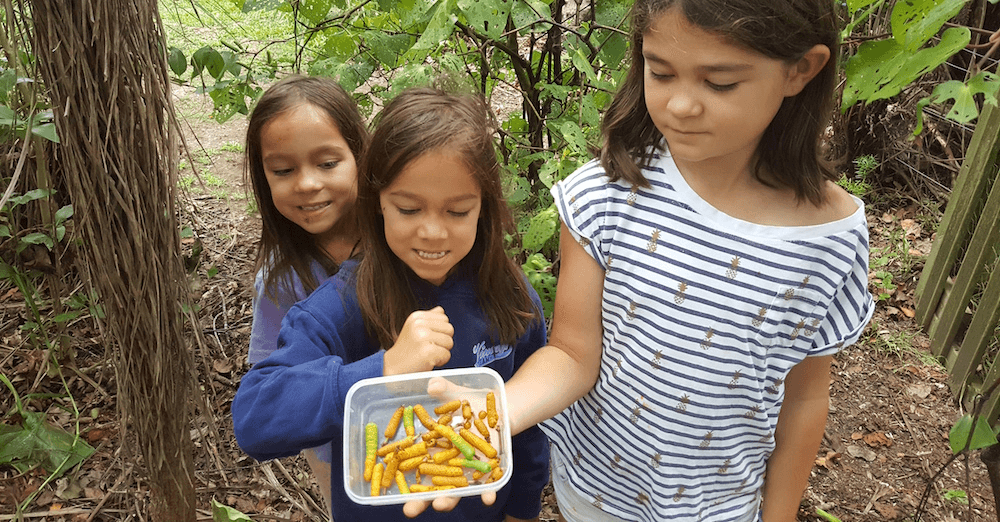When we think of berries we think of the delicious summer varieties – raspberries, strawberries, blackberries and more. But Aotearoa has an abundance of native autumn berries, if you know where to look.
For some of us our childhood memories of berries might range from picking wild blackberries on our way to school or trekking to the far end of the paddock with preserving pan in hand to harvest them for jam making, to picking-your-own strawberries at season end in the local market gardens or a single Chinese gooseberry vine (now called kiwifruit) growing over the back fence. For many of us, autumn is a special time as we impatiently wait for the berries to ripen, judging just the right time to pick them before the birds beat us to our long-awaited bounty.
The ngahere held the same wonder for our tūpuna as children. Berries were an important part of their diet. Māori often experienced very lean times during winter when food was scarce, but as always Papatūānuku would provide in the form of autumn berries. Larger berries such as tawa, karaka, taraire and hinau were good sources of carbohydrates that could be dried and stored for use during these lean times. The smaller, brightly-coloured berries of the mingimingi, totara, kahikatea and karamu were a tasty treat and equally as important as a good source of pre-winter antioxidants to help ward off or minimise the effects of winter ailments in our damp climate.
The key of course is being able to correctly identify which berries are edible and which are not. Some berries such as karaka berry kernels need special preparation to remove the toxin in them before they can be safely eaten. Other berries such as poroporo (Solanum laciniatum, S. aviculare and S. nigrum) can also be toxic when they are green and should only be eaten when fully ripe – that is, when the birds eat them. I grew up being told ‘don’t eat the berries off that deadly nightshade, they are poison’. Which of course would be true if poroporo was in fact deadly nightshade (Atropa belladonna). What many in New Zealand have come to know as ‘deadly nightshade’ is actually black nightshade (Solanum nigrum) whose berries are perfectly edible when black unless you have an allergy to foods from the Solanum family (which includes potatoes and tomatoes). Another story I was told was not to eat the bright purple berries of the turutu (Dianella nigra) as they are poisonous. This may be true for the unripe berries, but ripe they are quite tasty and I have suffered no ill effects so far.
However, the most important lesson I was taught very early in life was this: Do not eat any berry unless you know for sure what it is and that it is safe to eat!
Having scared you off from willy nilly sampling every brightly coloured berry you find in the bush to see if its toxic, I encourage you to learn about our native berries. Encouraging children to ‘experience’ the ngahere through these tasty morsels will help bring us back to nature, teach them (and remind us) about the importance of cycles in life and to value the blessings shared with us by Papatūānuku and her whānau. Hopefully time spent with our young ones in the bush now will reinvigorate a strong nature connection in them in the future, give them a legacy of magical childhood memories to share with their children and more importantly a desire to protect and preserve the ngahere and her precious taonga for the future. We have much to learn about life through observing and experiencing nature.
Despite all the worldly riches associated with modern living we are so much the poorer without the precious and priceless experiences of nature so easily instilled in us as children through the simple act of seeking out, correctly identifying and sharing in the of delights of our native berries. Sometimes the rongoā is not so much contained in the kai itself but in the journey to its discovery. Therefore, I encourage you to get out and reacquaint yourself with the ngahere and her fruits at this time of the year so that you may pass these priceless treasures onto our children.
For those of you with an abundance of tomatoes or extra large zucchinis, try this aromatic, gluten free Kawakawa Fruit Relish.
In a large non-metal bowl roughly cut 3 large onions, 8 large peeled tomatoes or half a large marrow and 2 finely chopped chillies. Sprinkle with 2 tablespoons of salt and leave overnight. In the morning drain off and discard the water that has appeared in the bottom of the bowl and place ingredients in a large stainless steel (not aluminium) pot. Add 350 grams of sugar and white vinegar to cover. Bring to the boil and then simmer for an hour or until contents have reduced by half. Mix 1.5 tablespoons of cornflour, 1 tablespoon mild curry powder and 1 tablespoon of turmeric together with some white vinegar to make a smooth paste. Add this paste to the pot stirring constantly. Add a good handful or two of mashed ripe kawakawa berries (with their centre stalk removed) and stir through well. Place into sterilised jars and leave for a couple of weeks to settle before eating. Enjoy!
